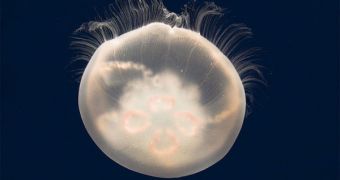In 2005, a deep-sea expedition in the Arctic Ocean unveiled a number of species far beneath the surface that were completely unknown to science. In fact, the most well-established of the species, a jelly-like creature, was totally new, and never-before investigated. Naturalists no longer stick to the old ideas about where life may have evolved, after they have found species of organisms in the most unaccessible places over the last years. The ones in the Arctic Ocean were separated from other deep-sea animals probably millions of years ago, by huge, deep-sea ridges.
These natural blocks make it extremely difficult for anything to go in or out, especially if the animals they “trap” are accustomed to living at only a certain pressure and temperature. If the ridge extends beyond these ranges, then the species naturally cannot leave the area without dying. The most secluded such area that the experts were able to identify thus far is a region known as the Canadian Basin, the BBC News reports. The 2005 study explored it with a submersible remote operated vehicle (ROV).
The largest part of the funding for the study conducted four years ago came from the Office of ocean Exploration and Research, a division of the US National Oceanic and Atmospheric Administration (NOAA). The complete results of that investigation were only recently published, in the latest issue of the scientific journal Deep Sea Research Part II. A leading member of the expedition team, Monterey Peninsula College biologist Dr. Kevin Raskof, says that the investigation provided many surprises.
“One thing was just how many different jellies there were, and the sizes of their populations. Some were somewhat well known from other oceans, but had not previously been found in the Arctic. That caused us to rethink our ideas about what the typical habitat would be for the species. We also discovered a number of new species that had not been found before,” he adds. The ROV images revealed even siphonophores, a group of small animals that live together in a structure that appears to be a larger, individual animal.
The research team now has bigger plans, to explore a number of regions around the Arctic, in hopes of finding even more new species. “You don't have to go too far to find interesting areas to study, you just have to dive deep,” Raskof says.

 14 DAY TRIAL //
14 DAY TRIAL //